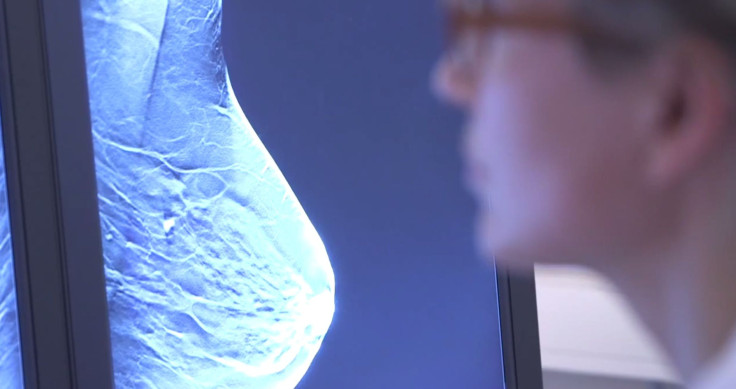Detecting Breast Cancer: 3D-Screening Method Detects 40% More Tumors, May One Day Replace Mammograms

For the average older woman, the mammography has become one of life’s more uncomfortable rites of passage.
Tightly squeezing your breasts between two paddles as they blast out (low level) radiation is hardly the height of pleasantness. And being advised to go through that process every one to two years once you turn 50 (or 40) is only the compressed cherry on top. Someday soon, though, breast cancer screenings might become at least a little easier to bear, and possibly more useful, if the results from a Swedish study comparing a relatively new method of cancer detection called tomosynthesis to the standard mammogram are of any worth. It found that the new kid on the block was able to detect 40 percent more of breast cancers, while using less radiation and feeling less agonizing for the patient.
Recruiting 7,500 women from Malmö, Sweden, the researchers asked the participants to take both a routine mammogram as well as undergo a digital breast tomosynthesis (DBT), a screening method that takes a rotating array of x-ray images from several different angles, creating a 3D composite image of the breast. Using six blinded experts with an average amount of 26 years’ experience in breast radiology to examine the women’s screening results, they found the DBT method detected 67 cancers compared to the 47 cancers detected via mammogram. Twenty-one cancers were solely detected by DBT where mammograms had failed to notice anything, 17 of which were considered invasive (one cancer was solely detected via mammogram). The tumors found by DBT were also found in both fatty and dense breast tissue, the latter of which has historically made detection difficult.
Perhaps more importantly, comfort wise, DBT screenings required less compression of the breast, with participants often commenting, without prompting, of its relative ease. Because of the nature of its technique, less radiation per screening was also needed. “Our results suggest that one-view DBT might be feasible as a stand-alone breast cancer screening modality,” the authors wrote.
Not all the news was necessarily positive, as the recall rate, in other words the number of perfectly healthy women who were contacted for further examination to determine cancer risk, was slightly higher among DBT readings than with mammograms. This suggests that there might be a higher incidence of mistakenly subjecting women without cancer to unnecessary testing, though the authors hope that more familiarity with DBT imaging can reduce that.
As the mammography as of late has itself been fiercely criticized for an unacceptably high rate of overdiagnosis, with some experts even recommending that the practice of offering routine mammograms be abolished, that’s especially worrying. These concerns might be minimized by the less radiation and the greater detection rate of invasive tumors DBT offers, though. The authors recommend large randomized studies to determine any potential pitfalls with DBT screenings. They will themselves conduct a second part of their study, examining another 7,500 women.
Overall, the authors are hopeful for the future of this technology. "We see five to 10 years from now as a possible timeframe for the large-scale introduction of the technique," said study author Sophia Zackrisson in a press release. "There is also an aspiration for more personalized screening, and breast tomosynthesis could therefore be one of several methods used."
Published by Medicaldaily.com



























